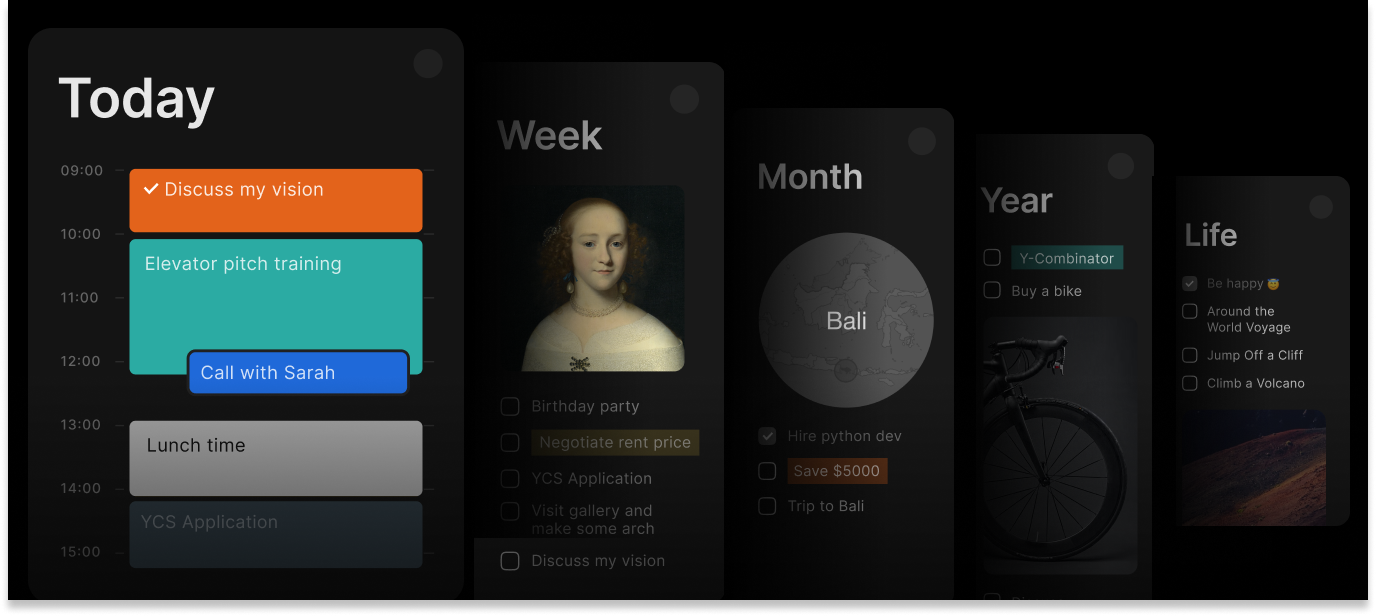Kanban Board: Your Guide to Getting Things Done Visually

Running a team or managing projects can feel overwhelming sometimes. You know that feeling when tasks pile up and nobody’s quite sure what’s happening with each piece of work? That’s where kanban boards come to the rescue. People often wonder what is a kanban board and what is kanban board functionality all about. Well, a kanban board is basically your visual command center for getting stuff done, and understanding whats a kanban board can do might just change how you work. What are kanban boards exactly? They’re simple visual tools that show work moving through different stages. These kanban boards turn chaos into clarity by letting everyone see what’s happening at a glance. The kanban board meaning is all about making work visible, and what does a kanban board demonstrate is pretty impressive - it shows who’s working on what, where bottlenecks are hiding, and how work flows through your team. Whether you’re checking out a kanban board example or hunting for the best kanban board solution, understanding what does kanban board demonstrate in terms of real results matters. Today’s teams use everything from basic kanban software to advanced kanban board software platforms, starting with a simple kanban board template and scaling up to full digital kanban board systems. A kanban task board works great as a kanban board for project management, and the right kanban board app can seriously upgrade how teams tackle their work.
Breaking Down What Kanban Boards Really Are
Think of a kanban board as your team’s mission control center. It’s where work lives, moves, and gets done. The kanban board meaning goes back to a simple idea: if you can see it, you can manage it better. This visual approach helps teams understand their workflow without getting lost in complicated processes or endless meetings.
Here’s the thing about kanban boards - they’re not just pretty pictures of work. They’re designed to solve real problems that teams face every day. When someone asks what are kanban boards good for, the answer is simple: they help teams work smarter, not harder. By making work visible, limiting how much gets started at once, and focusing on finishing things, Kanban creates a rhythm that actually works.
The beauty of this system lies in its core principles. Teams visualize their work, set limits on how much they tackle simultaneously, manage the flow of tasks, and make their process rules crystal clear. It sounds simple because it is - and that’s exactly why it works so well.
Where This Whole Thing Started
The story behind Kanban is pretty cool. Back in the 1940s, Toyota was trying to figure out how to build cars more efficiently. They came up with this system using physical cards (called “kanban” in Japanese) to signal when they needed more parts. Instead of stockpiling tons of inventory, they only made what they needed when they needed it. Smart, right?
Fast forward to the 2000s, and software teams started thinking, “Hey, this could work for our projects too.” They adapted Toyota’s manufacturing approach for knowledge work, and it caught on like wildfire. David J. Anderson formalized the whole thing around 2010, creating the framework that modern kanban software and digital kanban board tools follow today.
What’s fascinating is how something designed for car manufacturing became perfect for managing everything from software development to marketing campaigns. The principles just translate beautifully to any kind of work that moves through stages.
How Kanban Boards Actually Work
Picture a board divided into columns - that’s your kanban task board in its simplest form. Each column represents a stage of work, like “Ideas,” “Working On It,” and “Finished.” Work items (shown as cards) move from left to right as they progress.
But there’s more to it than just moving cards around. The magic happens with a few key components:
Columns represent different stages of your process. Most teams start with three basic columns, but you can customize them based on how your team actually works.
Cards are individual tasks or work items. They contain all the important details - what needs to be done, who’s responsible, deadlines, and any notes that help the team stay on track.
Work-in-Progress (WIP) limits are probably the most important part. These are rules about how many items can sit in each column at once. It might sound restrictive, but it’s actually liberating - it helps teams focus on finishing things instead of starting everything.
Swimlanes are horizontal rows that can separate different types of work, priorities, or team members. Think of them as organizing your board into different streams of work.
Setting Up Your First Kanban Board
Creating a kanban board for project management doesn’t have to be complicated. The best approach is to start simple and evolve as you learn what works for your team.
Step 1
Begin by mapping out how work currently flows through your team. What are the actual stages a task goes through from idea to completion? Don’t overthink it - just write down what really happens, not what you wish happened.
Step 2
Next, set up your board with columns that match these stages. Start with something basic like “To Do, ” “Doing, ” and “Done.” You can always add more columns later as you get more sophisticated.
Step 3
Here’s where it gets interesting: set some WIP limits. This means deciding how many tasks can be “in progress” at the same time. It feels weird at first, but it’s like magic for productivity. When people can’t start new work until they finish what they’re already doing, things actually get done faster.
Step 4
Create cards for your current work and put them in the right columns. Don’t worry about making them perfect - just get started. The beauty of kanban board software is that you can always adjust things as you go.
Step 5
Finally, establish some basic rules for moving cards between columns. When is something ready to move from “To Do” to “Doing”? What needs to happen before something can be marked “Done”? Having these criteria clear helps everyone stay on the same page.
Why Teams Love Using Kanban Boards
The benefits of implementing a best kanban board system go way beyond just looking organized. Teams that switch to Kanban often report some pretty impressive changes in how they work.
- Everything becomes visible - no more wondering what happened to that important task or whether someone’s overwhelmed with work. The board shows everything at a glance.
- Collaboration gets easier when everyone can see the same picture. Team members naturally start helping each other out when they can see where bottlenecks are forming.
- Flexibility improves because Kanban adapts to changing priorities. Unlike rigid project management approaches, you can shift focus without throwing your whole system out the window.
- Quality goes up because teams aren’t juggling too many things at once. When people can focus on fewer tasks, they do better work.
- Continuous improvement happens naturally because the board makes problems visible. Teams can spot patterns and make adjustments that actually stick.
- Less waste occurs because teams stop starting work they can’t finish and focus on completing what they’ve already begun.
Kanban Boards in Timestripe
Timestripe takes the traditional Kanban approach and adds some really thoughtful features that make it work better for modern teams. The platform combines the visual power of Kanban with collaboration tools that actually make sense.
What makes Timestripe’s kanban board different is how it handles the details that matter. The drag-and-drop interface feels natural, but underneath there’s sophisticated workflow management that helps teams stay organized without feeling constrained.
Some standout features include customizable board layouts that adapt to how teams actually work, advanced filtering that helps people find what they need quickly, and real-time collaboration that lets multiple team members work together seamlessly.
The integration capabilities mean teams don’t have to abandon their existing tools - everything works together. Plus, the mobile app ensures people can stay connected to their work whether they’re in the office or on the go.
What does a kanban board demonstrate in Timestripe? It shows real-time project health, team capacity, and workflow efficiency in a way that’s both comprehensive and easy to understand.
Where Kanban Boards Make Sense
The versatility of kanban board software means it works well across different industries and situations. Software teams use it for managing development cycles, tracking bugs, and coordinating releases. Marketing teams find it perfect for campaign planning, content creation, and managing all those moving pieces that make campaigns successful.
Manufacturing companies use digital versions alongside their physical systems for production scheduling and quality control. Healthcare organizations coordinate patient care and manage administrative processes. Educational institutions track course development and student progress.
Even individuals find digital kanban board tools helpful for personal productivity, habit tracking, and managing their various projects and goals.
Each kanban board example shows how the core principles adapt to different needs while maintaining the essential benefits of visual workflow management. The beauty is that the system scales from individual use to large organizational implementations.
Understanding What Your Board Tells You
What does kanban board demonstrate about team performance? These visual tools reveal insights about how efficiently work moves through your system. Teams can see patterns in cycle time, identify bottlenecks before they become major problems, and make data-driven decisions about how to improve their processes.
The question what is kanban board effectiveness comes down to measurable improvements: faster delivery times, higher quality output, better team satisfaction, and more predictable workflows. Regular review of these metrics helps teams stay on track and continue improving their processes.
Teams that pay attention to their board metrics often discover surprising insights about their work patterns and can make adjustments that have real impact on their results.
Ready to Give Kanban a Try?
Kanban boards represent a shift toward more visual, collaborative, and effective project management. They’re not just another tool - they’re a different way of thinking about work that emphasizes flow, visibility, and continuous improvement.
The journey from wondering what is a kanban board to running an effective visual workflow system takes some practice, but the results speak for themselves. Whether managing software projects, marketing campaigns, or personal tasks, Kanban principles can transform how work gets done.
Ready to experience visual project management for yourself? Timestripe’s digital kanban board solution offers everything needed to get started with Kanban, plus the advanced features that growing teams need. With intuitive design, powerful collaboration capabilities, and flexible customization options, Timestripe makes it easy to implement Kanban in a way that fits your team’s unique needs.
Read next

Take Timestripe for a test drive today!
Discover how visual project management can streamline workflows, improve team collaboration, and deliver better results.
Get Started

